
Why IT Budget Planning Can Give CIOs Nightmares
 Why IT Budget Planning Can Give CIOs Nightmares
Why IT Budget Planning Can Give CIOs Nightmares
CIOs struggle to align their budget to business priorities and must adjust financial planning throughout the year to keep up with changing organizational needs.
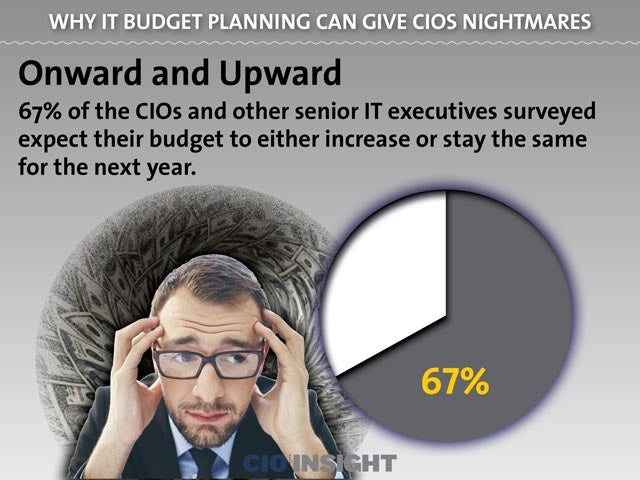 Onward and Upward
Onward and Upward
67% of the CIOs and other senior IT executives surveyed expect their budget to either increase or stay the same for the next year.
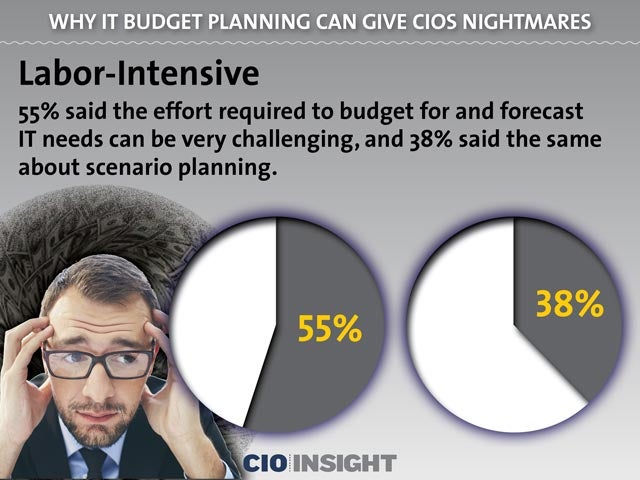 Labor-Intensive
Labor-Intensive
55% said the effort required to budget for and forecast IT needs can be very challenging, and 38% said the same about scenario planning.
 Spot-On
Spot-On
70% said they are capable of accurately planning and forecasting IT operating costs, and a similar percent said the same about IT resource expenses, such as labor and vendor services.
 Off-Point
Off-Point
Just 17% said they can accurately plan and forecast IT service demand costs, and only 30% said the same about project operating costs once a project is completed.
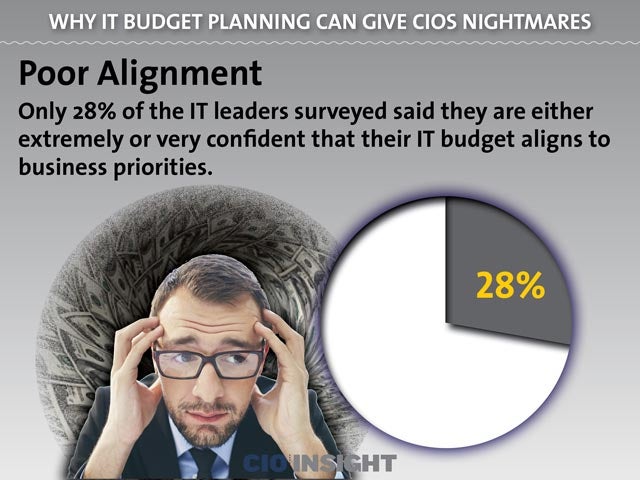 Poor Alignment
Poor Alignment
Only 28% of the IT leaders surveyed said they are either extremely or very confident that their IT budget aligns to business priorities.
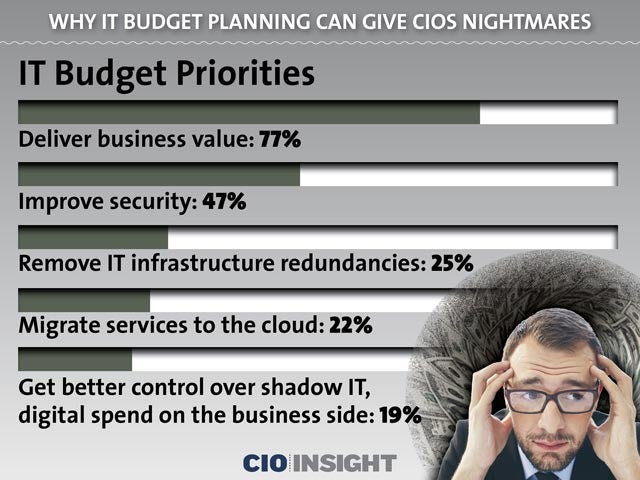 IT Budget Priorities
IT Budget Priorities
Deliver business value: 77%, Improve security: 47%, Remove IT infrastructure redundancies: 25%, Migrate services to the cloud: 22%, Get better control over shadow IT, digital spend on the business side: 19%
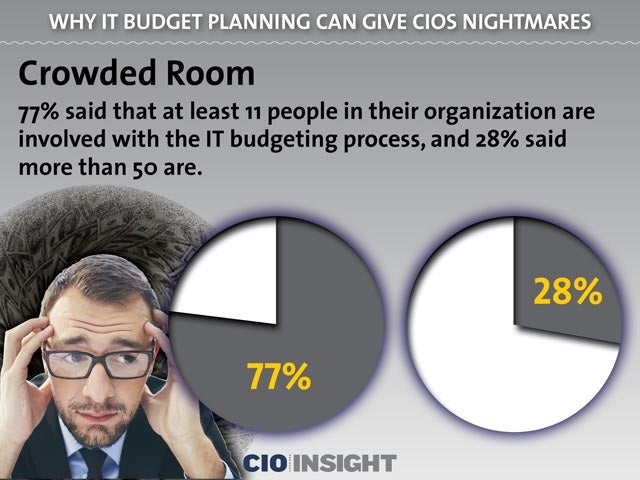 Crowded Room
Crowded Room
77% said that at least 11 people in their organization are involved with the IT budgeting process, and 28% said more than 50 are.
 Long-Term View
Long-Term View
54% of the survey respondents said their IT financial planning horizon spans at least three years.
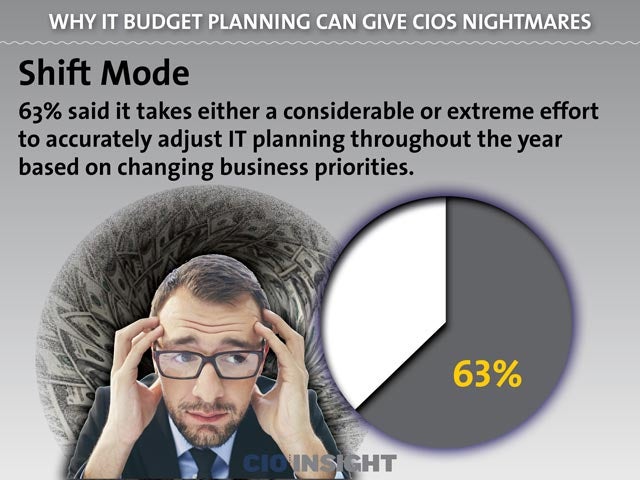 Shift Mode
Shift Mode
63% said it takes either a considerable or extreme effort to accurately adjust IT planning throughout the year based on changing business priorities.